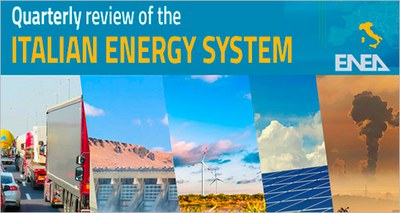Energy: Italy, in 2018 consumption still increasing (+ 1%), transport’s share on the rise
18/4/2019
Renewable electricity on the rise (+ 12%), wind and photovoltaics slowing down (-3%)
 Energy consumption still on the rise in 2018 in Italy (+ 1% as compared to the previous year), driven by transport, while hydroelectric production surged (+ 31%) gas consumption and carbon dioxide emissions fell (- 3.3%) and (-2%) respectively. This is what emerges from the ENEA quarterly analysis of the Italian energy system, also showing for the entire 2018 stronger signs of criticality, starting with the decline, for the first time in 10 years, of wind and photovoltaic energy production (-3%). Furthermore, there remains a large share of fossil fuels, equal to 75% of the total, while green sources account for 20% of the energy mix (one percentage point more than in 2017) [1].
Energy consumption still on the rise in 2018 in Italy (+ 1% as compared to the previous year), driven by transport, while hydroelectric production surged (+ 31%) gas consumption and carbon dioxide emissions fell (- 3.3%) and (-2%) respectively. This is what emerges from the ENEA quarterly analysis of the Italian energy system, also showing for the entire 2018 stronger signs of criticality, starting with the decline, for the first time in 10 years, of wind and photovoltaic energy production (-3%). Furthermore, there remains a large share of fossil fuels, equal to 75% of the total, while green sources account for 20% of the energy mix (one percentage point more than in 2017) [1].
“The rapid increase in petroleum products consumption in transport (+ 4%) offset the decline of other fossil sources; moreover, the increase in renewable electricity (+ 12%) is only apparentely positive, as it is linked to a conjunctural factor, the recovery of hydroelectric production", Francesco Gracceva, the expert who coordinated the ENEA analysis, explained.
"This scenario makes it more complex to reach the decarbonisation goals that the country has set out to achieve. The problem is that it’s been four years since energy consumption moved in parallel with economic growth, while a central element of decarbonisation is an increase in energy consumption much smaller than the GDP” Gracceva said.
This is clearly reflected in a new worsening of the ENEA ISPRED index (-8% on an annual basis) which assesses the performance of the national energy system based on three key elements: energy security, prices and carbon dioxide emissions. "The sharp deterioration of the indicators relating to renewable sources is a sign of the risk Italy runs of not being able to reach the 30% renewables target by 2030, and the same risk concerns emission reduction targets ", Gracceva concluded.
As for prices, energy in 2018 recorded significant average retail increases due to international markets dynamics; in particular, electricity prices for household customers reached their highest in the last decade, while for small and medium-sized industrial users prices were among the highest in the EU, except for large-scale industry which benefited from the introduction of reductions for energy-consuming consumers. Since the end of 2018, however, there has been a gradual and drastic drop in wholesale prices which has begun to produce positive effects on consumers in 2019.
Among the signs that raise concern also our Country's growing trade deficit in technologies related to the energy transition. In particular, the deficit for low-carbon mobility reached 1.2 billion euro (January-November 2018), mostly for the purchase of hybrid vehicles.
The summary of contents and the Unabridged Analysis are available at:
[1] The remaining 5% of the energy mix was covered by electricity imports (0.5 points more than the previous year).
